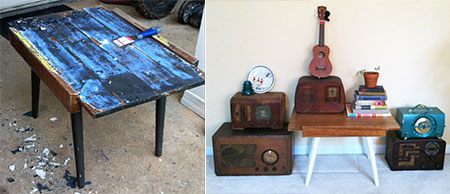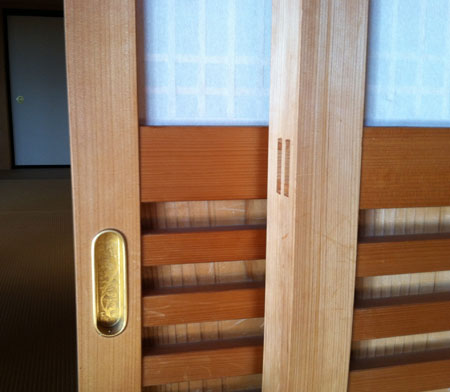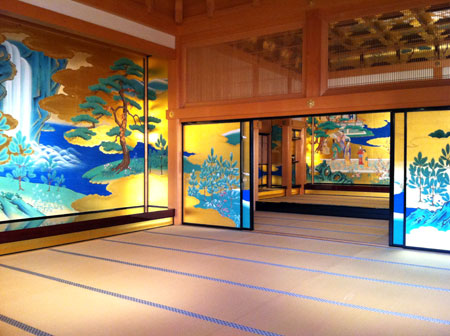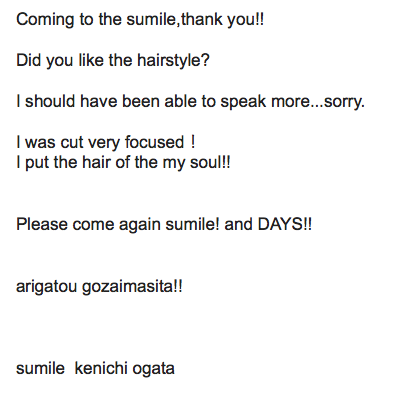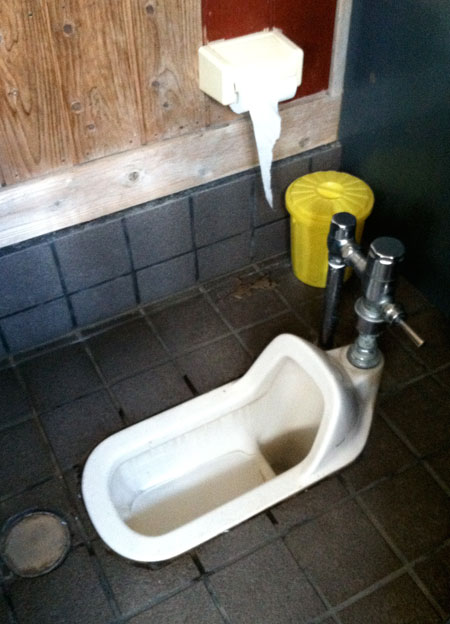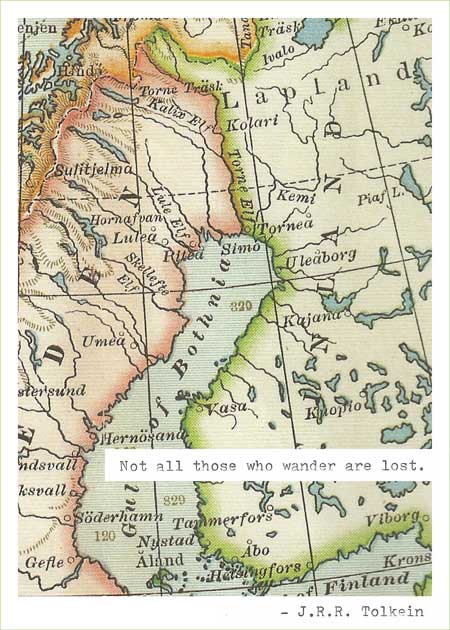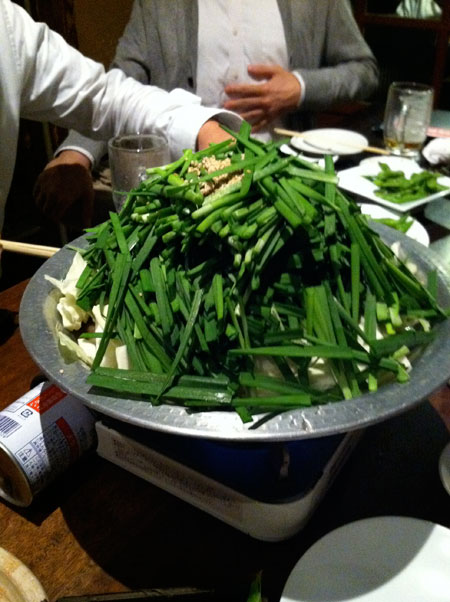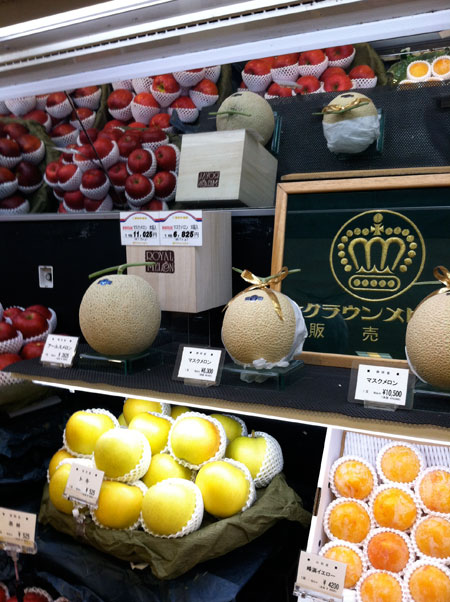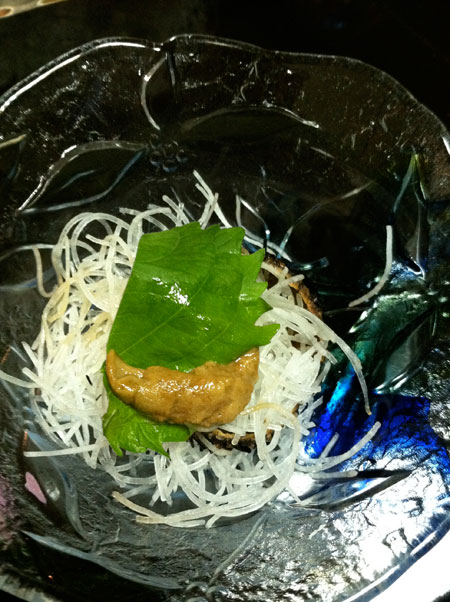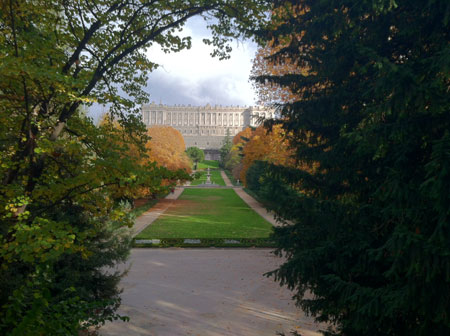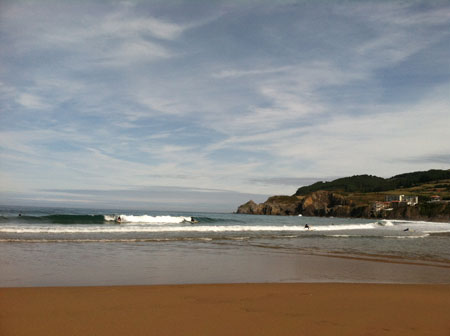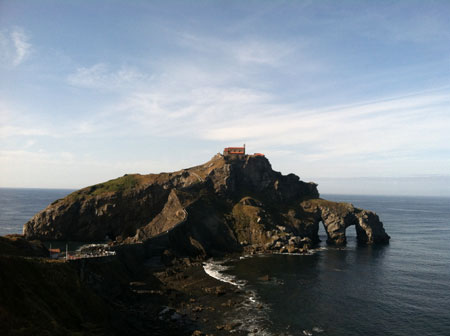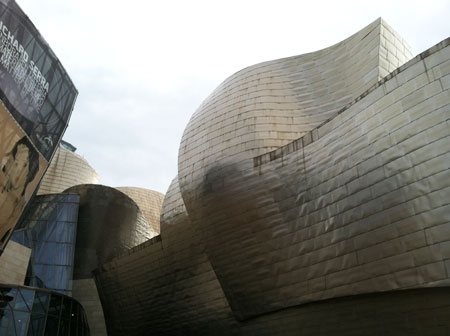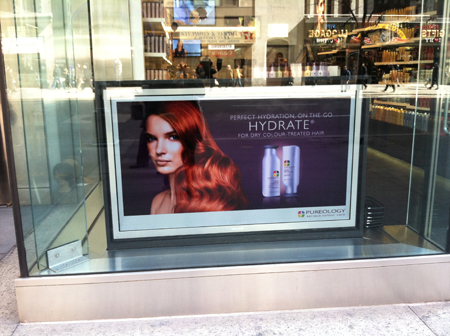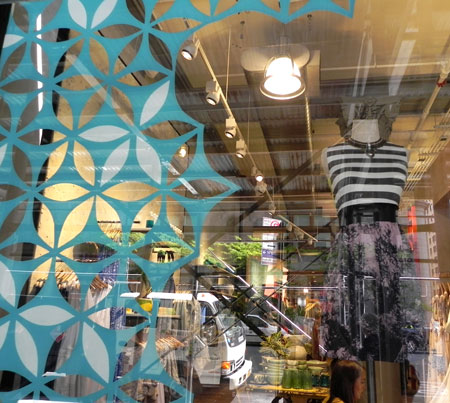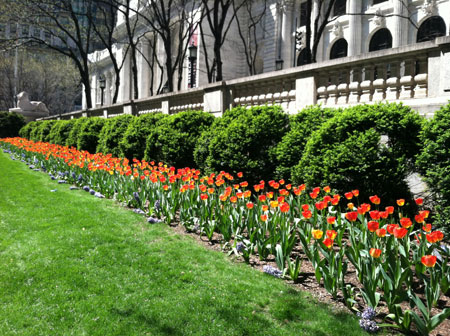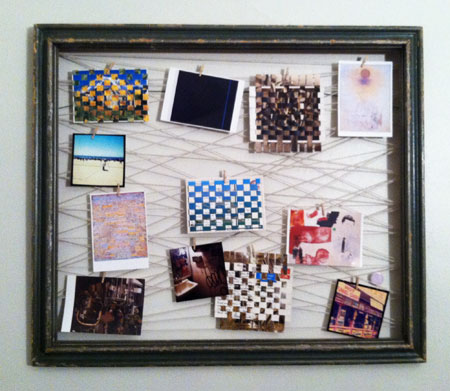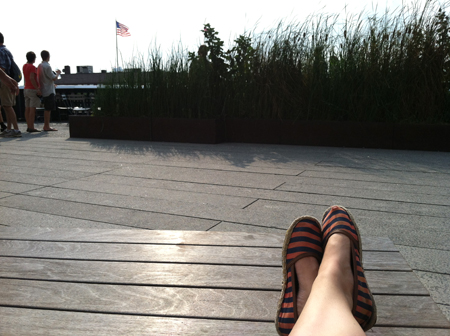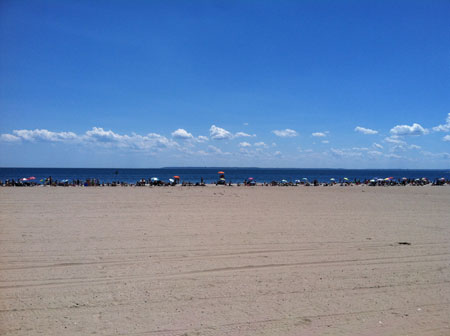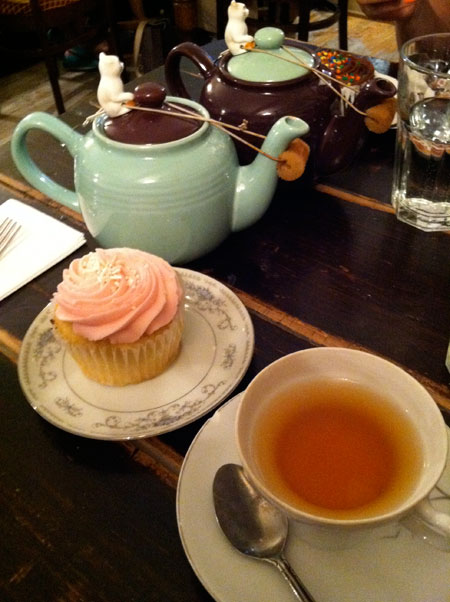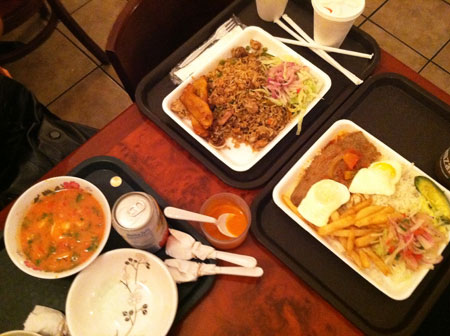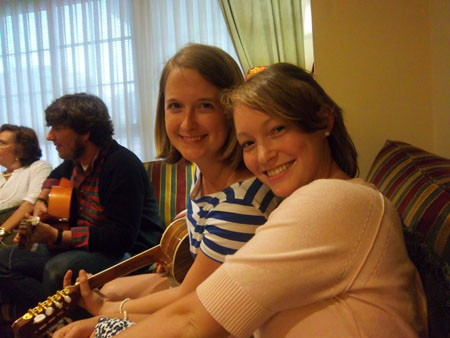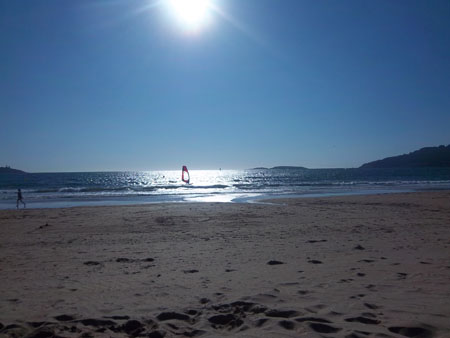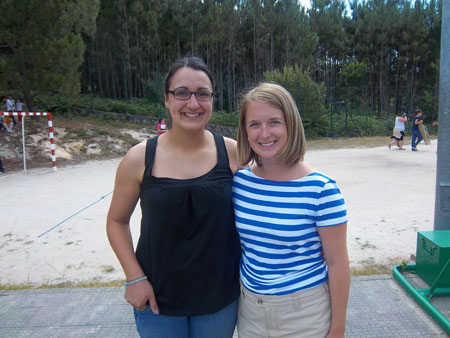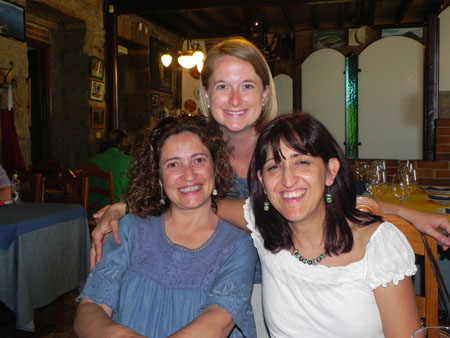[video width="450" height="337" m4v="http://www.robinmooty.com/cms/wp-content/uploads/2013/12/Im-a-Freelancer.m4v"][/video]
Uncategorized
Little Table Salvaging
Autumn
Explorewell
 Drum roll, please ...----'''''----...
Drum roll, please ...----'''''----...
Introducing: Explorewell, a design reconnaissance blog. I am launching this blog to explore all things design + culture, while maintaining my blog here for my personal work and adventures. Explorewell exists to observe, document and reflect upon how design and culture come together to enrich our lives and add value to our work. The site takes real world observations, travel, field experiences and conversations to further explore their contexts, probe the deeper questions surrounding them, and make sense of how design’s role in them relates to the bigger social picture. Its topics are meant to connect ideas in the social sphere, broaden understanding of design’s role in business and innovation, evaluate shifts in design and culture, and champion beauty.
Cape San Blas & Apalachicola, FL
Design's Move to the Grown-Up Table
Bernard's voice drifted through the humidity of a late spring night over an outdoor dinner table filled with young designers eager to experience how they may use design to make a difference. Many of my favorite moments I spent at PieLab in Greensboro, Alabama, were when dinner turned long—the food and drinks gone, but the conversations rolled on. This particular night, Bernard Cannife was eloquently sharing insights from his experience on the front lines of the changing design world: "Design is, for the first time, at the grown-up table." For a young graduate, my idealism still mostly intact, the words were high-heart-rate inducing. How exhilarating to enter a field recently given an adult chair! But why now? What had changed? Who did we finally marry to graduate from the kiddie table? What new expectations are placed on us? For most of history, design and art have been intrinsically linked. But within the last century, design has moved into a field now recognized on its own accord and is more widely understood by the public as separate from fine art. Design was usually considered to be a kind of service shop—one where designers merely fulfill client requests. But today, we're seeing a shift. Designers, and creatives of all types, are being recognized as a major component of a strong economy, giving those in creative professions more leverage in mainstream culture. Creatives aren't just bunking up in artist neighborhoods anymore—they now fill the shiny offices of Silicon Valley, Milan, and Tokyo. In his book, The Rise of the Creative Class, Richard Florida's research shows that the Creative Class now makes up almost a third of the workforce and has taken "people who would once have been viewed as bizarre mavericks operating at the bohemian fringe and setting them at the very heart of the process of innovation and economic growth" (p. 6).
The shifting role of designers is the result of many social, cultural and technological changes. In the developed world, we have reached an era where our basic human needs are met by the wonders of mass production. In The Substance of Style, Virginia Postrel proposes that in such a culture, we turn to design for the next stride forward. We don't simply want a refrigerator that works—heavens no! We want one that is stainless steel, has high gloss handles, french doors, an LED touch screen and is energy efficient. We expect every item we purchase to come with a variety of customizable options—to be super-designed. Now that "necessary" items are easy to find and affordable to purchase, there are more boutique versions of products appearing on shelves. In a recent issue of a lifestyle magazine, I came across a handmade Italian cafetera-style coffee maker featured for its craftsmanship and priced at over $5,000. Even coming from a coffee snob, there is no way a coffee maker that costs such an exorbitant amount is going to make coffee that tastes that much more superior to a cheaper option. This is a purchase made sheerly for design value, not functionality.
While artisanal is on the rise, it's not the only factor behind this movement towards a more recognized culture of design. Many larger companies have also made good design a top priority—seating a designer across the table from the engineer, the R&D officer and the financial advisor. Target, America's second-largest discount retailer, made design a key driver in elevating its brand. Their logo, branding, advertising, in-store way-finding and store-brand products all have a clean, sophisticated design that makes the shopping experience and brand recognition a step above its competitors'. Home store, IKEA, made modern design affordable to more people by offering modular options, therefore giving the user a large part in composition decisions. This cracked open a skilled, esoteric world of design and made aspects of it available to the population of non-designers. The DIY movement, inspired by the likes of other large brands, including Martha Stewart and HGTV, has contributed to consumers becoming more eager to understand design and intrigued with the invisible designer processes behind their products and experiences. Apple has played an enormous role in making consumers more design-aware. Its ruthless pursuit to perfect user experience has pushed the expectations of consumers time after time. The company makes few things, but makes them well. The touting of their values has instilled the language of design in consumers.
How to start chipping away at the impact of the world wide web on design? It is like showing up at Everest with a toothpick. Its entire experience and usability is based on design. It has surged the need for designers and given pedestrian users an incalculable awareness of how design affects them. It has built the platform for an entire market of websites, apps and the devices that support them. The development of internet-based technology has matured alongside the entrepreneurial and start-up-minded spirit of the young working generation. The new workforce has a firmer grasp than ever on the power of branding and excellence in design practices. With so much of our daily lives now involving some sort of a digital experience, often times the only way to make your company stand out from the others is to employ better design. Postrel observes that "in a crowded marketplace, aesthetics is often the only way to make a product stand out" (The Substance of Style, p. 2). Among the vast world of websites and apps, yours cannot simply "function" but must offer a more beautiful and intuitive experience.
Another factor worth mentioning is the impact of consumers being more aware of their ecological footprint. Even if the vast majority of consumers do not buy into "going green" alternatives, the once counter-cultural movement has procured a place in the mainstream and at times one of the main selling points of a product. Newly conscious of their consumption and discarding habits, consumers often sacrifice to pay a higher price point for goods that have more eco-friendly packaging or are of better quality, ensuring longevity and less waste.
In all of these transitions, design has migrated from being a peripheral service shop, to a partner in the whole development process of innovation, business, message-making and production. In the evolving modern workplace, collaboration is taking precedence and pulling many different "hats" to the table—to equally imagine, plan and develop our collective future. Many workplaces have adopted the brainstorming techniques long-used by designers. Employees from a vast number of non-design sectors have become more sensitive to elements of design, the process of design, and systematic thinking. The information flows both ways—designers are being served other responsibilities and processes of others at the adult table. Indeed it is the very marrying of design and technology that has brought design the largest share of its credibility, making it no longer just "art". John Maeda made the point in a recent article on CNN.com that "the relevance of design is expanding far beyond visual aesthetics—to everything from tackling global issues such as climate change, to making sense of the overwhelming amounts of data that surrounds us."
What do we offer to the adult conversation?
Bern's further commentary that Alabama night etched words in my head that still linger: "Designers are market creators, global thinkers, and brokers of change."
Among the huge technological implementations of the last decade, designers have been at the forefront of development in the hardware of these products, the aesthetic of the interface and the wireframes of the networks on which they run. Apps were never a "need" in peoples' lives but now the majority of us probably cannot imagine living without a few staple ones on which we depend. While many of these products were not born in the mind of a designer, it took a designer to give them substance and bring them to life, helping create the new market. We cannot overlook that while we do not only make stuff pretty, it is still the designer who brings actual deliverables to the table—we have to know how to "make pretty" but also "make smart." We intermediate between consumer voices and an actual understanding of what they want. This translation experience gives us skills as sense-makers, giving us one more asset to add to the table setting. Sense-making is our ability to interpret facts in meaningful ways. However, we must be careful to address real needs in improving the quality of life. "When real needs are neglected, and artificial ones everywhere stimulated into an avid hunger for novelty, sensation and status-appeal...It should not surprise [us] to find a thin and pretentious reality informing the design language of the world" (What is a Designer?, Norman Potter, p. 36).
In our hyper-connected world we are bombarded with information, but information must be deciphered. Designers are able take in the "big picture" while also considering local realities—to fluidly shift from talking about global movements to adjusting a vector's slope two degrees. "Designers are the best synthesizers in the world. They make a synthesis of human needs, current conditions in an economy, in materials, in sustainability issues—and then what they do at the end, if they are good, is much more than the sum of its parts" (Paola Antonelli treats design as art, TED.com). Our cultural awareness allows us to trace trends, connect ideas, think broadly about the human experience and be more productively reflective. In the flattening world, as Thomas Friedman suggests, everything is so "integrated that there is no 'out' and no 'in' anymore...every product and many services now are imagined, designed, marketed and built through global supply chains" ("Made in the World," NY Times, Jan. 29, 2012). Designers must be citizens of the world and simultaneously our local communities.
To be a broker of change is to mediate between the client and audience. We do this well because designers are empathetic and passionate about adding value to the world via our craft. We are problem solvers who can take our analytical methodologies and convert them to engaging channels of change. Rudy VanderLans goes even further to say that designers are not simply "facilitators, but...producers of messages, ideas and products. Not just hired hands, but initiators with personal stake in the projects they [create]" (Emigre 69: THE END, p. 55). Designers must realize their power as message creators to broker positive social change.
As designers find their place in the conversation at the adult table, we must make sure to listen to the others there, reflect, and then using our good manners, voice our unique perspective. Cheers to a new-found seat.
*Thanks to Megan Deal and Amber Griggs for feedback/edits.
Fear of Failure
"There is only one thing that makes a dream impossible to achieve:the fear of failure."
—Paulo Coehlo, The Alchemist
More of Japanland
Or as Pilot in Shogun calls it "The Japans." A few more belated photos:
I was continually surprised by a new discoveries of Japanese attention to detail. From little baskets next to your table in restaurants to place your bag, scarf, etc., to a small cork to rest your fork on instead of directly on the table, to a hot cloth at the beginning of each meal, to a small sticky pad of paper about one inch square that came with the gum I bought so you'd have a way to wrap it before tossing it. It was also in the details of their architecture: most things were very minimal, but thoroughly considered and intricately designed.
Kumamoto Castle.
View of Kumamoto from the Castle.
A wonderful mark of what makes a great urban space is that you can have the perks of city life and reasonable density, but yet have green space and tranquility. I loved that in Kumamoto I could easily get anywhere I needed to go on my bike, there were endless winding streets with restaurants and stores in the center, yet I could pass through a fantastic park with green space on the way to the city center. I could be on our street in the city and it would still be completely silent at times. The value of a tranquil atmosphere was very apparent in the Japanese culture. However, it is also a culture of oxymorons—while you can have a perfectly peaceful walk on a city street, you're usually only blocks away from Pachenko sites—huge casino-type buildings that are basically my inferno on earth. Blaring music, flashing lights of row after row of machines combined with industrial overhead lighting so bright you need sunglasses, smoking indoors, etc. It was almost a game to go in and just see how long you could stand there without having a panic attack. Our street was in what would look like a not-so-safe area next to a train track, were it in Europe or America. Pedro pointed it out, and I quickly caught on to how safe it was though—there were always women walking down our street at night alone, nobody locks their bikes up (you just slide a built-on lock through your back wheel), Pedro's Japanese co-workers instructed him to just leave the keys in the company-rented car, unlocked, so the next person to need them would have them. I went into a grocery store one day and parked my bike with all of the others. Next to me, someone had left their computer bag in their bike basket while they went in.
Quintessential Japanese house we found on a hike.
Temple we found on the same hike. They all have that unique sloping/curved roof. Very interesting.
Hair salons were everywhere in the city center and obviously a popular industry so I decided to partake in that cultural element one day. And bottom line, just needed a haircut. Many of the the salons, stores and restaurants cross-promote each other by a small table of little postcards/business cards from other businesses near their door or register. Being a designer I usually filled up with a handful of them before leaving a shop because many had really interesting designs. I picked up one that was a cool illustration of a guy in his salon. So when I decided to get a hair cut I emailed him in English to make an appointment, apologizing that I couldn't speak Japanese. He emailed me back apologizing for his minimal English, but assuring me he had used Google translator. It was the most meticulous haircut I've ever had and for that definitely turned out great. Above was his email afterwards. DAYS that he mentions is a cool bar Pedro adored that has an entire wall of CD's that you can request. They know where everything is and can immediately locate whatever you request.
Small point of interest: Japan has an entire range of toilet experiences. Many of the public ones are the Turkish-style, floor-squatters. A little difficult sometimes for an American. However, the ones in our apartments were like learning to navigate a space ship: it was in Japanese so I couldn't read all of the options, but out of the like ten buttons (in the below photo half of them are still covered up), I gathered that you can change the toilet seat temperature, the direction the water squirts out, the temperature of the water, etc. Though a little unsure about it at first, I quickly began to wish these would catch on in America.
Jiro Dreams of Sushi
A documentary I highly recommend:
"Always try to improve on yourself. Always look beyond and above yourself. Always strive to elevate your craft.""Once you decide your occupation, you must immerse yourself in your work. You have to fall in love with your work. Never complain about your job. You must dedicate your life to mastering your skill. That's the secret of success."
Wandering
Itadakimasu!
Since food is usually the first thing I'm excited about in any new place, I figured it's only right to start off a slue of Japanese posts highlighting some meals. Itadakimasu is the Japanese phrase cheered before digging into a meal and loosely translates to "I greatly receive."

This was kind of just a quickie little tempura place but dee-lish. Fried chicken, seafood and veggies, with rice, miso soup, and some good sauces (man, I loved the sauces in that country). I repeated this place and the kebab place quite a few times.
Hold your breath: it's raw horse. Not gonna lie, it was hard to try, but if you didn't know what it is, the flavor was pretty good, especially with those onions, raw garlic and soy sauce all over it. This is the traditional dish of Kumamoto and it came from a legend that some samurai had been trapped in the city's castle for days under siege and as their last resort they had to eat their horses. This meal also came with the soup and sashimi below. The mound of ingredients cooked down into a soup while you ate the rest of the meal. To enter the restaurant you pass through a charming garden with red maple trees, low standing stables, and soft lighting. Some of the outdoor tables even came with electric blankets on the floor-level benches. We ate in a room that closed off with bamboo sliding doors—many restaurants there have rooms that close off so that you and your party are more secluded. The table has a little button on it so you can summon the wait staff when needed.
I wandered around one day looking for a place to eat lunch and found a cute place with some atmosphere. I went in and it turned out to be an Italian place. Nothing was in English so I tried what I sometimes had to do and just pick a word from the dictionary like "chicken" and point to the menu to ask "chicken?" A lady at the next table watched me struggle as the waitress tried to explain to me it was all pasta, and eventually leaned over and asked me where I was from. She spoke wonderful English from several trips she had taken to England. She invited me to a Chinese restaurant later that week. It was probably the most peaceful restaurant I've ever been in. We sat along a wall of solid windows facing a garden, tranquil music sounding in the background, and had the whole place to ourselves. Akiko pointed out that the calligraphy on the wall above was the symbol for silence. The following two were the amazing dishes we had there. I loved that everything always came on it's own little dish because they have developed a beautiful ceramic tradition.
One of the things I found interesting is that they had vending machines everywhere—and a 711 on about every corner that had pretty decent prepared meals. In the 711s and vending machines they have a hot and cold drink section. I am a slight coffee snob so it shocked me to find that I actually did like the vending machine bottled coffee! Sort of just a cheap latte in a bottle...
One of the drawbacks of Japan is how mega expensive it is. There was a fantastic multi-story grocery store with every kind of food imaginable, included lots of delicacies. Some of it was just "semi-expensive" but affordable. However, there were some prized items like the $140 cantaloupes below, and other various fruits in the $20-150 range. How it tastes any different than a $2 cantaloupe, I don't know.
The highlight meal of the trip was the pre-fixed meal that came with our seaside hotel in Amakusa. They bring it to your room to serve on the floor-level table. It came with about a million different dishes and included raw tuna, raw squid, raw and cooked octopus, sea urchin, raw lobster, cooked crab, soup over a burner, some kind of gelatinous stuff I have no clue what it was, baby dried shrimps, normal rolled sushi, sashimi, egg custard, noodle soup, rice, miso soup and more I can't remember. After it was all set on the table, I kept hearing something moving. I said, "Pedro, I think something is still alive." But nothing was moving. Then we opened the dish with the rubber-band holding the top on to find a live shrimp. When the attendant came in bringing more stuff, we asked her how to eat it, but with the language barrier couldn't communicate it so she showed us how to peel it. Obviously I knew how to peel a shrimp, I just didn't know you could do it while it was alive. So Pedro was brave and ate that one probably still twitching. I got him to peel mine so I could throw it in my soup with the little fire underneath it to cook it. While peeling it, the thing flopped off of the table onto the floor! I've never had a meal that tried to escape me!
This was only half of it (terrible photo from my phone, one day I'll remember to actually pull my real camera out).
Sea Urchin
Pushing the Scope
The Dark Side of the Lens is a captivating short film put together by Mickey Smith, an Irish surf photographer. The transcript is beautiful and has a few phrases in it that always linger long with me: "I never set out to become anything in particular, only to live creatively and push the scope of my experience for adventure and for passion. That's still all that means something to me...same as most anyone with dreams."
and
"I might have to scrape by for a living, but at least it's a living worth scraping...there may not be a future in it, but at least it's a present worth remembering."
My desire to stay on the move often makes me feel flaky. In each new place there are new things to discover but also new people to have to say goodbye to each time. You set up your life in an apartment for the moment and "nest" a little bit, only to pack it all up shortly. But as with anything in life there are pros and cons to every situation. Though the "unsettledness" is sometimes hard, there are the flipside benefits of getting to see new places, have a wide scope of experiences, delve into new cultures, make more friends, gather different ideas, and of course, eat good food. One of my favorite authors, whose words I repeatedly come back to, put a beautiful concept in my head about travel: You open as in childhood and—for a time—receive this world. There’s the visceral aspect too—the huntress who is free. Free to go, free to return home bringing memories to lay on the hearth (Francis Mayes, A Year in the World).
After my lease was up in New York, I decided it was time again for some movement, some gathering of things, to continue to spread the scope of my experience. And there were people I wanted to see, plain as that. I went to Spain for three weeks with a visits to friends in Madrid, Pamplona, Bilbao, and Vigo. Pedro had a friend's wedding in Vigo so I was able to attend my first Spanish wedding which was quite a treat; and time with the Morales is always great. After that we set off for Japan, where he is working, for two months. More posts on that later...
Madrid: A friend recommended this park to me behind the Palacio Real and the Cathedral. It was gorgeous in it's autumn colors and the still summer green grass. I had a lovely stroll.
Next two, Pamplona: Where the running of the bulls passes and the Cathedral.
While visiting a friend in Bilbao we went to the coast which is a quick hour-ish trip by car. The País Basco countryside and coasts are stunning and much like the ones in Galicia. Above is Bakio. A little ways down the coast was a church, San Juan Gaztelugatxe, built on a peninsula in the 900s! We climbed down and then up about a million steps to get there, but the views were priceless. My jaw was floored in awe the whole time. I really couldn't take it all in, and it almost "hurt". In A Severe Mercy, Sheldon Vanauken talks about a beauty that hurts. While beauty is pure and good, I think that sometimes there can be a pain in that something can be so beautiful, you just absolutely can't take it in or fully understand it. And that leaves you wanting. But maybe that's one of the purposes of beauty.
I went to the Guggenheim in Bilbao...a long time dream. The building designed by Frank Gehry is itself enough to go for—there's not a straight line in it! Minimal majesty. The collection of modern art was fantastic as well.
Eight months of New York City in one post...here goes...
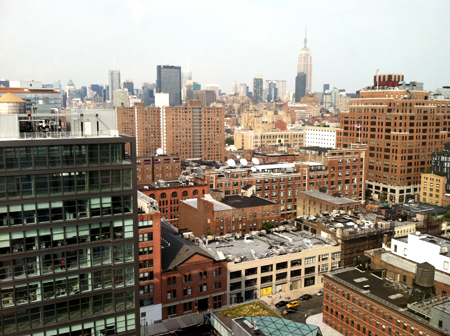 In July of 2011, I arrived from Spain back home to Alabama in high summer. The garden was in full bloom, the trees formed canopies over the roads, and the usual humidity hung so thick it could make you claustrophobic. While I was glad for a rest and time with my family, what I thought would be a two-month-maximum stay there turned into seven. When the New Year came around I gave myself a January 31 deadline to just get somewhere. What mattered was traction and forward momentum. (Writing this from 10 months after that moment, I find myself with a weird draw to the South again, there's always a lure there, and then I get there and am back in my love-hate relationship with it, but that's another blog post...)
In July of 2011, I arrived from Spain back home to Alabama in high summer. The garden was in full bloom, the trees formed canopies over the roads, and the usual humidity hung so thick it could make you claustrophobic. While I was glad for a rest and time with my family, what I thought would be a two-month-maximum stay there turned into seven. When the New Year came around I gave myself a January 31 deadline to just get somewhere. What mattered was traction and forward momentum. (Writing this from 10 months after that moment, I find myself with a weird draw to the South again, there's always a lure there, and then I get there and am back in my love-hate relationship with it, but that's another blog post...)
I decided on New York, as I knew it would be an adventure, I had some contacts, and it was a move I could make with a suitcase-and-a-half and not have to replace my almost-dead car. I thought it would be fantastic to live in what many consider the cultural capital of the world and where the New York Times is you local paper. I wanted to understand references made to New York in so many cultural mediums. It would also be a return to things I was missing about Europe like public transportation, an urban atmosphere and diversity. So with my one-way ticket booked and two weeks in a hostel reserved, I boarded a plane on January 31.
My first twenty-four hours were a complete shock to my system. I had never been to New York. I had seen large cities before, but never one with such an overwhelming pace and noise caliber. I pushed my luggage through the subway turnstiles because I was too cheap to pay for a taxi and didn't realize they have special doors off to the side to help you go through with luggage. I'm sure I looked like an idiot and that I received many "she-must-be-new-here" looks, as I often gave to many people in the months to come. I felt like a foreigner in my own country. Anywhere else, I always choose a window seat in a restaurant so I can people watch. Not here—I would look for the seat at the back corner so that I could tuck away from the noise and sight of frenetic passerby.
My first day a very kind entrepreneur/designer agreed to take time from her busy schedule to meet with me to give me some insight and a nudge in the right direction. I had admired her work for a while and emailed her a few days before explaining my current need for someone older and wiser to shed some light for me on the industry. I will be grateful to her years to come because two days later I got a phone call from her saying that she would be out of the country for the next month and that it was a shame her apartment would be empty—I was welcome to it if I wanted it. Free. I was confused for a moment and said I'd have to call her back. Within five seconds I realized I would have been crazy not to take it and immediately re-contacted her. Because of her generosity I was able to take a breather and get my feet underneath me calmly. I had a place to land for a moment while I sought a job and apartment. On top of it simply being a treat to get out of the disgusting jail cell style hostel, her place was amazing. It was right by the High Line in Chelsea, immaculately curated with designerly items, lights that came on slowly in the bathroom based on a motion sensor and a doorman who knew me by name when I arrived.
Later on the afternoon of my first day, I got a Skype message from Pedro saying that he would be landing in two days—surprise! He was only able to be there about four days but we had a great time exploring the city. It was so nice to have someone to get to know the city with and especially in things like having someone to eat real food with instead of sitting alone in a Whole Foods cafeteria.
My second day I had an interview at L'Oreal to work as a freelancer on their Pureology brand where I stayed for my eight months while in New York. I was able to get great experience working on a large corporate beauty brand and to work with a team of excellent, fun designers. Not to mention it was fun to work on Fifth Avenue and commute through Grand Central Station for a spell, though in the end it wore on me.
Screen I designed for a window display for Pureology
Through a friend's friend I found a wonderful roommate who needed a sub-letter quickly, and she turned out to be one of the best parts about my time in New York. You can read her blog here as she is an incredible writer (an actual real, professional writer)! She lived in Astoria and on my first trip out there I wasn't impressed by the neighborhood, as it seemed dirty and rundown. After about a week though, I realized how safe it is, how much more of a real neighborhood it feels like than other places in New York, and eventually came to really like it. The main street, 30th Avenue, is full of restaurants of ethnicity from all over the world that are all delicious and unique. I indulged way too much and often couldn't wait to get back to Astoria from Manhattan each day just to try a new restaurant, or eat the food truck to which I got addicted—many times I had to hold my breath walking by it because if I didn't, and got a whiff of it, game over, I was taking a box of Egyptian chicken and rice with white sauce home. There is one block there that is considered one of the most diverse blocks in the world. I loved that on the way to the subway stop I often hardly heard a word of English. My favorite was when parents would talk to their children in their native language and the children would respond in English. It was originally a Greek neighborhood, but now there are Italians, Spaniards, Latins, Brazilians, Indians, Egyptians, many others from the Middle East, and other parts of Asia. I liked living out of Manhattan because it felt like a nice respite from the city each evening to get to "leave" the city, although the minimum 45 minute commute to get anywhere was definitely a downside.
While in New York I was able to explore more aspects of design. For one, I met some great designers who do good work. I got to see Elizabeth Pastor give a lecture at IESE about her firm's process in "sense-making" design. I attended a talk by Milton Glaser where he explained his process of exploring new techniques and then putting them to use for clients. Another event I enjoyed was organized by Mark Randall and held at SVA with several speakers discussing social design. One of my favorite quotes of the night was a guy who worked at MTV in their social responsibility department (I don't have that notebook with me right now so I don't know his name): "At MTV we have a mandate to pioneer." What a dream job description—a mandate to pioneer! On Governer's Island there was an exhibition of works curated by We Made This (and maybe Ellen Lupton?...I was confused on the set-up), coupled with a day of design talks from an American, a Luxembourgian, and three Spanish designers all talking about how they use hand drawn images in their work. Lovely collection, and fun to have to take a boat to get there.
In addition to being at L'Oreal, I also freelanced on the side. I collaborated with the Center for Urban Pedagogy on a booklet for one of their projects in which they were teaching youth about how leadership in the city works/how people get elected. I freelanced at Anthropologie for one week working on their window display for the re-opening of their 5th Avenue store after being remodeled.
One of my goals in New York was to explore city life. Almost just to "see if I could survive" real city life. I'm from Alabama so I wasn't born a city girl, but in the last few years cities have become more intriguing to me. They contain so many layers of systems that overlap: pedestrian pathways, streets for cars, the web of train and subway tracks, air traffic, water traffic, electric and phone cables, plumbing, etc. It's a crazy mess! But somehow it works...and it's actually better for the environment! It's hard to believe that when you walk behind car mufflers in the city and and see the exhaust fuming out. But compact places do less damage than sprawling suburbia. While I think the quality of life in mega-cities can be compromised in many ways, there has got to be a middle ground of urban landscapes that still retain the green-ness and neighborhood-ness of suburbs. This is a topic I will explore for a while to come. To read more of my pro/con trade-offs of New York and city life in general, you can read a post I wrote for the awesome Megan Deal's More Than This Blog.
I once read in The European Dream (Rifkin) that the Eastern and Western mindsets are different in the sense that the Western mind tends to box things in and make them either/or, while the Eastern mind can see things as both—that you sometimes have to have one to complete the other. In the end, New York was a great experience and as a whole, I think of it as a great city. However, it was not "my place" for many reasons (again see the More Than This Blog for longer description) so I press onward to keep exploring. I don't think I'm a pure "city girl" but I have to understand "the city" to understand "not city." I now appreciate city things, but also appreciate a return to life outside of a booming metropolis—especially greenery! Updates from the next adventure soon...
An assorted collection of things I liked in NYC:
Loved getting to each lunch in the lovely Bryant Park many days.
The flowers in spring were gorgeous.
Of course it was fun to do the touristy stuff too. I went to the Statue of Liberty kind of just because you have to. As it turns out, I was way more moved than I expected. It is truly majestic. I had the chills a few times just thinking about the immigrants who had been on boats for months, arriving in the harbor there to see Lady Liberty breaking off her chains, offering the light of freedom and justice, and being their Ebeneezer raised to mark the start of their new life.
The last four years I've had the challenge of decorating rooms on a budget in each new place I've been. I found this frame in a trash pile in Greenwich Village one day, brought it home, tacked on some strings and, voila, you have a picture holder. I had to get innovative with cardboard boxes to make a dresser/storage space.
This is the beautiful building where the incredible Brooklyn Flea is held in the winter. In the summer, the flea market, along with Smorgasburg, are on the water front and make for a weekend well-spent. There are endless little treasures to find.
Central Park, of course. It is always a lovely trip there. New York lacks sufficient green space throughout the rest of the city that you can easily get to, but if you have time to make it Central Park for a stroll, the great thing is that it's so big you can get lost in the thick of it and feel like it's a real forest and not in the middle of a bustling city.
The High Line is a work of genius. It's one of my favorite parts of the city. Built a level above the city on a re-purposed train track, all of its elements are fantastically well-crafted. It tucks and winds through buildings, but it's an odd sensation when you're not a ground level—a totally different experience of the city. There are sidewalks that morph into benches, plants that are always in bloom, reclining platforms, art spaces, views of the water and the Statue of Liberty, some fancy snack stands, a place where water bubbles onto the sidewalk in summer, amphitheater-type seating for movies, and on and on...I hope many more of these happen in other cities.
Who knew New York had beaches?! I was delighted to find out I could take a subway (about an hour and a half one, mind you) to pretty decent beaches. I spent a few Saturdays at Brighton and Rockaway.
One Saturday I was desperate to get out of the city so a friend and I took a train an hour north up the Hudson to Cold Spring. It struck me that as soon as you leave it city, it instantly becomes rural. This was a cute little bed and breakfast town on the river. We found a little patch of sand on the water in the trees and napped. What a breath of fresh air from the city.
There were concert series all summer, many of them free—a huge perk about the city. Celebrate Brooklyn brought some great bands and is a great venue in Prospect Park. The Head and the Heart was by far my favorite—I was almost in tears with two songs they were so soul-full.
Besides the friends I made, the food was the best part about the city, but that's because food is my weakness. So a quick favorite food recap:
Tea and cupcakes at Alice's Tea
Fat kid bowl at Crave: a bed of fries, kebab chicken, blue cheese and buffalo sauce.
Total home-style Ecuadorian food at the place where my Ecuadorian friends and I would go on lunch break.
Calorie bomb at Queens Comfort: A huge waffle with fried chicken and a butter ball on top. They also had a great fried avocado sandwich and corn-on-the-cob with sriracha and parmesan...mmm.
Best shrimp po'boy I've ever had at Sugarfreak. Also gets my vote for one of the coolest decorated restaurants—no detail is left unconsidered.
Drinks at Les Bains rooftop bar. Cheers to you, New York. So long...
Fashion is the armor
I recently watched Bill Cunningham New York and found his childlike-giddiness toward his art and documenting, even after decades of the same work, to be deeply inspiring. The simplicity and clarity with which he approaches his craft allows him to continue to plow forward with this ever-keen, spot-on observations of the the fashion world, and how that plays out daily on the "real" streets. Yet he also brings a deeply cerebral, humane approach to a field that is so often seen as frivolous and esoteric. I paused it to write down these poignant words: "The wider world...perceives fashion as sometimes a frivolity that should be done away with in the face of social upheavals and problems that are enormous; the point is, in fact, that fashion is the armor to survive the reality of everyday life. I don't think you could do away with it. It would be like to do away with civilization." —Bill Cunningham in Bill Cunningham New York
I spent my Sunday afternoon at the Metropolitan Museum and meandered my way (albeit squeezing my way through any slight gap that would open up between people) through the Schiaparelli and Prada: Impossible Conversations exhibit. It offers interesting juxtapositions of their works, overlayed by their conversations about their approach to their work, their processes and influences, and their debate over whether fashion design is art. While their designs are unattainable for the common-folk, I did especially like this quote by Prada:
"What I love about fashion is its accessibility and its democracy. Everyone wears it, and everyone relates to it." —Prada
I love the idea that fashion touches everyone. Rich or poor, everyone wakes up to put clothes on each day and those choices are made within a certain cultural, demographic, geographic context and they say something, whether they're meant to or not. They are a reflection of every cultural context around you. Even if one is "rebelling" with their clothes it is still communicating something, and rebelling against a certain time/culture/norm—and that still places it in a certain time and place! What a powerful cultural medium.
Initiative
I have recently been inspired by various people who have all taken initiative to start something, whether it's a project, a journey, a relationship, etc. These are people who in several cases started something not knowing if they will achieve any sort of "success" from it, but simply sow into it because they enjoy it and trust that if there is something really to it, they will reap in time. The Pecans! project I collaborated on while at PieLab was recently featured as a case study in Designing for Social Change by Andrew Shea. I got to give a short little Pecha Kucha rundown on the project at his book release which was definitely fun. As a follow up afterward and a "thank you" for his taking such initiative, I sent him a Banksy quote I read last year that stuck with me: "Most people never take their initiative because no one told them to." I loved his poignant response: "I like that Banksy uses 'initiative' instead of 'talent' in that quote. Talent evolves with effort." Fantastic insight. Maybe it's now not a matter of asking "What do I already know I'm good at?" and instead asking, "What need do I see and what solution do I know I can get started on?" and then start honing those talents as part of the process.
Maria Montessori is becoming one of my heroes
"To collect one's forces, even when they seem to be scattered, and when one's aim is only dimly perceived--this is a great action and will sooner or later bring forth fruits."—Maria Montessori
Designing Nun
I re-visited Sister Corita's rules the other day and found them ever-pertinent. I started to underline them in the little sheet of them I printed out for my notebook, but then realized I was underlining them all, defeating the purpose of giving emphasis. I especially love "Consider everything an experiement."

*taken from http://eismann-sf.com/news/?p=133
Doors
I used to pass these doors in Ourense on one of the paths I would take through the city. I always found something rustically romantic about them. (terrible ipod photo).
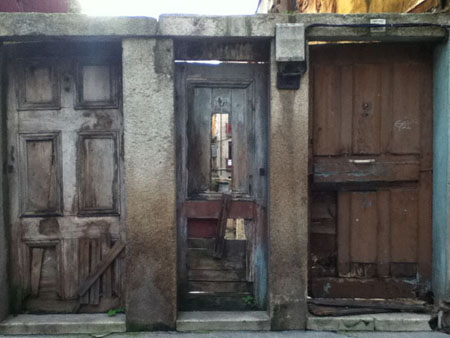
The doors closed on my time in Spain (definitely not the last!) with a painful goodbye in June. I returned home looking for the next open doors. Obviously with the balancing of freelance and a job search, I had to make time to finally get caught up on blog posts...in JANUARY! Wow, too long.
My time since June has been spent freelancing on some fun projects, looking for the next opportunity, and taking this time (forced "extra time" as it may be) to read a lot and explore topics of design about which I now have a head swarming with questions. July was as hot as ever in Alabama humidity. And August. And September. Though good to refresh at home. I spent part of October and November working on a contract project with FEMA in Birmingham putting together tornado recovery plan books. It was an interesting experience and a great time to get to pick some brains of city planners. After seeing many cities this past year I have a fascination with how we plan cities, foster culture within them, and how people move around and connect in them. I have started Jane Jacobs' Death and Life of Great American Cities to explain some more in a classic sense. Highly recommended.
A trip to Chicago in December to see much-missed friends from time at PieLab/Greensboro was so refreshing. We had many conversations about where design is going, what is the changing role of the designer, what do we therefore call ourselves now, is social design really viable?, etc. Expect many more fleshed out explorations of this as I gather notes from sketchbooks. Those are some smart people and I'm always inspired by how they're "making it work" (thethirdofthree.com, amandabuck.com, wholman.com, Will's recent article here).
A job search in a struggling economy is never fun. I keep questioning if I really need to keep "searching," or whether or not to stop, and start my own gig. Tempting. The thing is, though, I'm young and have much to learn from those more imbedded in the profession. All good craftsmen have apprentices. There's a passing on of the trade that young designers cannot forsake. Hopefully the newer ones will push the conversation, but to do that you must know where you stand in the conversation. Delving into some old books and periodicals (not the only-eye-candy-rewarding design magazines on shelves now) is helping. Stay tuned for findings there.
E agora, a morriña...
Okay, Galicians, don't judge me if the title isn't perfect. Morriña: Galician sentiment of a longing for something lost.One of the biggest blessings in Spain was mine and Katie's adopted family while there. I will forever be indebted for their welcoming us into their family and group of friends. It's interesting how much smell is a powerful memory trigger. I recently received a package from their house and the instant smell of their house made me miss them and Galicia so much.
And Katie, the perfect roomie/rover companion for the year:
Panxón. Some of the loveliest beaches.
And a wonderful school...
Last few pictures from my school. I couldn't have asked for a better place to be than CEIP de Santiago de Oliveira. Buena gente.

Nuria, the awesome English teacher I worked alongside.
Click here for a video from class.

